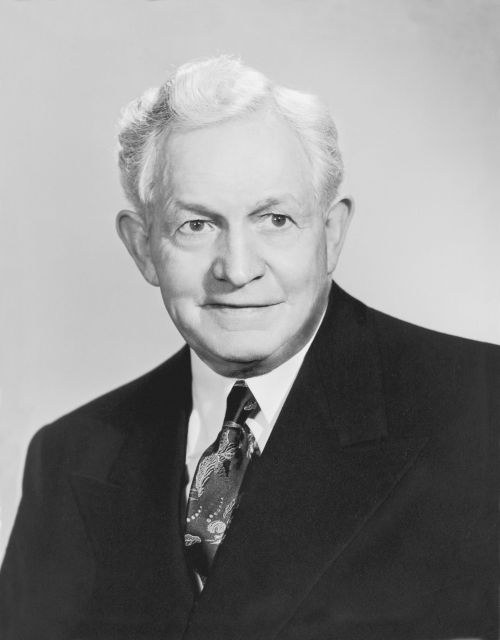It& #39;s a lazy Saturday, so how about a #MormonAmerica story-time?
This one involves LDS discussions concerning polygamy in the 1960s. Just not the type you& #39;d consider. Instead, it involves Africa, Oxford, Quentin Cook, and one of the icons of New Mormon History. Buckle up. /1
This one involves LDS discussions concerning polygamy in the 1960s. Just not the type you& #39;d consider. Instead, it involves Africa, Oxford, Quentin Cook, and one of the icons of New Mormon History. Buckle up. /1
At the 1962 LDS general conference, N Elden Tanner, then president of the England Mission, got up to give an update on his mission. Among his success stories was "a very educated and talented young Oxford graduate" who had received the gospel. /2 https://archive.org/details/conferencereport1962a/page/n53/mode/2up">https://archive.org/details/c...
What made this convert so special was that he was an expert in Semitic languages, a university professor in London, and spoke six languages, including Hebrew. Yet when confronted with the Book of Mormon, he exhibited "childlike faith" and gained a testimony. /3
One of the missionaries who taught him? Quentin Cook, now a modern LDS apostle. Cook spoke about the conversion, without naming him, in a 2012 General Conference address as evidence of the Book of Mormon& #39;s divinity. /4 https://www.churchofjesuschrist.org/study/general-conference/2012/04/in-tune-with-the-music-of-faith?lang=eng">https://www.churchofjesuschrist.org/study/gen...
The high-profile convert grew close to church authorities. David O McKay, the Church President, even sent him a signed photograph in September and invited him to attend October& #39;s conference. There was talk that he might even become a professor at BYU. /5
Yet through all this, the convert had yet to be baptized. Why not?
Well, it turns out there were two issues. First: he was from Africa. And Second: he was polygamist. /6
Well, it turns out there were two issues. First: he was from Africa. And Second: he was polygamist. /6
Ebeid Sarofim was born and raised in Egypt, and previous to becoming an academic practiced law in Cairo. It was there that he married his first wife. Then he moved to Europe for an education, and at some point married a second wife while his first remained back home. /7
This caused serious pause to church leaders and delayed Sarofim& #39;s baptism. Could a polygamist be a full member of the church? Would he be willing to join if he knew he could never hold the priesthood? The First Presidency debated this in several meetings. /8
Context made the questions even more difficult, as the Church was simultaneously dealing with 1) Civil Rights issues, which they were especially trying to keep quiet during George Romney& #39;s gubernatorial run, and 2) fundamentalist challenges in Utah, politicizing polygamy. /9
Then, in October, Sarofim arrived in Salt Lake City, stood as he was recognized by McKay from the stand, and then met with church leaders in private. McKay skirted around the marriage issue, but found Sarofim witty and charming. The London scholar gifted him an Arabic Quran. /10
But McKay found distressing news: there was a rumor Sarofim had never informed his first wife that he had married again. They decided this was a serious obstacle, and determined not to authorize baptism until resolved. (Insert Joseph Smith joke here.) /11
If this wasn& #39;t enough, there was added context: the LDS Church was also making important decisions about what to do with a group of around 4,000 Nigerians who had accepted the faith and were waiting for missionaries. Now McKay worried: what if *they* were polygamists, too? /12
This assumption, of course, was rooted more in racial prejudice than evidence, but it was a serious fear nonetheless. The question jeopardized a whole new mission they were right then organizing. Race was enough of a barrier, but polygamy could change the whole equation. /13
They decided that since Nigerian polygamy was legal, it was different than the fundamentalist sort. Further, since they would not have access to the priesthood and temple--questions would continue to pester, of course, until 1978--the issue of full membership was moot. /14
Then, in early 1963, they received word that both of Sarofim& #39;s wives were aware of the polygamous situation, so McKay determined the issue settled. Ebeid Sarofim was then finally baptized, though not ordained to the priesthood, and didn& #39;t teach at BYU. /15
The interesting twist at the end? Later that year, a young missionary attended a fireside in which Sarofim spoke about his conversion and belief in the Book of Mormon. Later, the missionary also heard that the dignified scholar was polygamous, which peaked his interest. /16
When that missionary returned to BYU, he started studying Mormon history, with special attention to polygamy. Including post-manifesto polygamy.
That missionary& #39;s name? D. Michael Quinn. /fin
That missionary& #39;s name? D. Michael Quinn. /fin
And yes, yes, I know: *piqued. I’m always bound to have a typo.

 Read on Twitter
Read on Twitter


